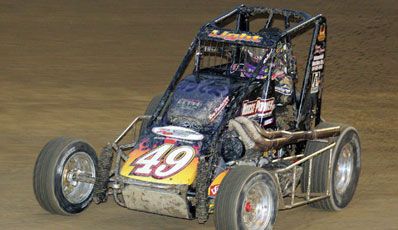
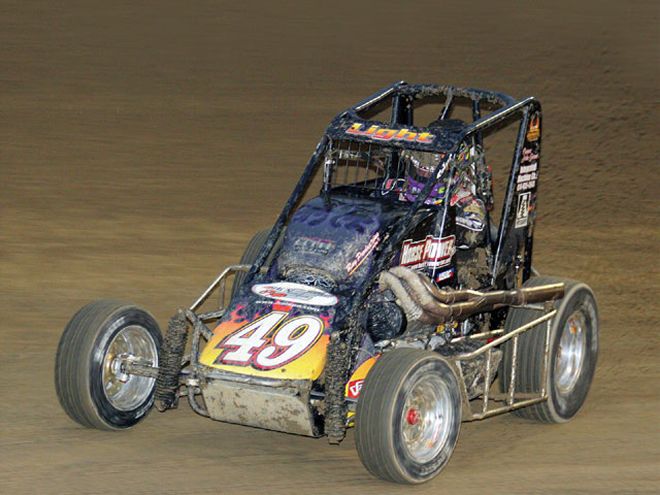 Photo by Larry Kellogg
Photo by Larry Kellogg
We already know the main selling point for racing with alcohol fuel (methanol) in classes where it is allowed: In an engine tuned correctly it can make more power than gasoline. That's all you need to know, right? But alcohol is also a tricky fuel that is notoriously hard on engines, especially wherever aluminum is involved.
The problem with alcohol is the fuel evaporates quickly, attacks aluminum, and offers virtually no lubrication, unlike gasoline. These drawbacks don't offset the fact that you can use alcohol to make gobs of power, but care must be taken with your weekly and off-season maintenance programs. Some of these precautions may seem a bit unusual if you are switching from a gasoline class to one that allows alcohol, but they really aren't major once they become part of your routine.
"The physical properties of the fuel are unique," explains Brad Cauzillo of Kinsler Fuel Injection, which manufactures some of the most respected mechanical fuel injection systems for Sprint Car racing. "Methanol dries relatively quickly, and it attracts moisture which can contaminate the fuel. When it dries it first turns to a gel. In the next phase it starts to clump up, and in the last phase it turns into something a lot like sand." In mechanical fuel pumps, the barrel valves, and other components used in alcohol systems, there are very tight metal-to-metal clearances, so getting sand into the system is detrimental.
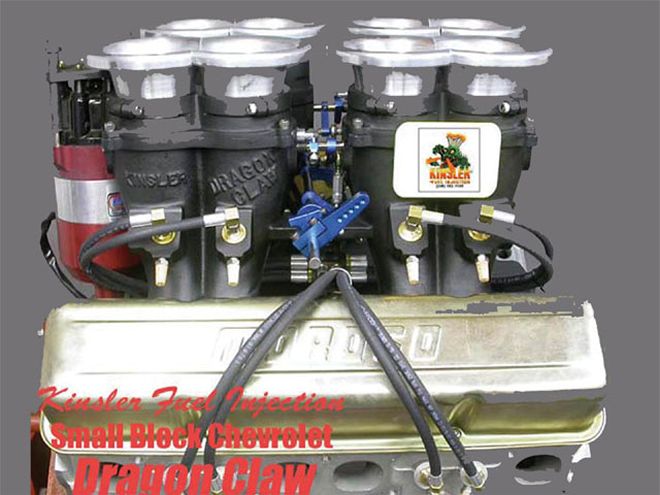 Mechanical fuel injection systems such as this one from Kinsler Fuel Injection are common in Sprint Car racing and feature many moving pieces. If they aren't protected from the harmful effects of the alcohol in the racing fuel, performance can begin to suffer quite quickly. Courtesy of Kinsler Fuel Injection
Mechanical fuel injection systems such as this one from Kinsler Fuel Injection are common in Sprint Car racing and feature many moving pieces. If they aren't protected from the harmful effects of the alcohol in the racing fuel, performance can begin to suffer quite quickly. Courtesy of Kinsler Fuel Injection
"Another problem is methanol causes scaling," continues Cauzillo. "There is a chemical reaction that occurs between the aluminum and the methanol. That's why raw aluminum doesn't survive a long time if you don't maintain it. [Anodizing forms] a helpful protective coating, but the methanol will still eat through it."
Cauzillo recommends flushing the fuel system after every race. It should be done the next day if possible. Believe it or not, one of the best ways to do this is with race gas. With a mechanical injection system, you can plumb the fuel pump to an external fuel tank, install a very lean main jet, and crank the engine. It should crank, sputter, and die, but that will be enough to adequately flush the fuel pump, clean out the main jet, and wash down the combustion chamber and cylinder walls. But Cauzillo says the backside of the high-speed and secondary jets will not see enough fuel pressure to operate, so they still need to be removed and cleaned by hand. A lubricant/dispersant such as Marvel Mystery Oil seems to work well for this purpose. Drain the fuel tank and cap off any fuel lines that may have alcohol in them. Since moisture in the air contaminates the methanol, the system must be sealed off from the atmosphere as much as possible.
Of course, now that all the alcohol has been flushed out with gasoline (it needs to be race gas to avoid detonation problems), you need to have a way to get the gasoline out when the new season begins. It may take a little work to get the gasoline flushed out and the engine running on tune with the alcohol again, but it's worth it.
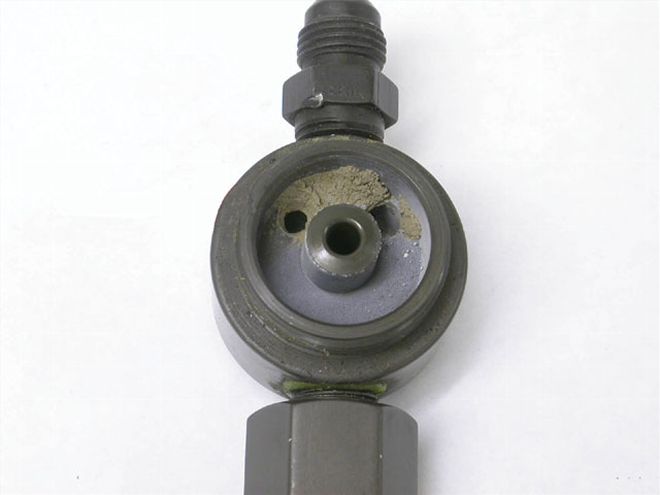 This is what you want to avoid at all costs. This is a high-speed bypass valve that was in an engine where the methanol fuel wasn't properly flushed. It dried in the valve and created this deposit, which has the consistency of sand. Courtesy of Kinsler Fuel Injection
This is what you want to avoid at all costs. This is a high-speed bypass valve that was in an engine where the methanol fuel wasn't properly flushed. It dried in the valve and created this deposit, which has the consistency of sand. Courtesy of Kinsler Fuel Injection
If you don't have that kind of time every week, Cauzillo says there is another option. A few fuel and oil manufacturers offer an alcohol additive that adds lubricity to the fuel. "Lubricants can help reduce corrosion," he explains. "There are a lot of products out there, and there are a handful we've tested that work well. The M2 brand that VP Racing Fuels manufactures is an upper-lube additive and works well. It's translucent and doesn't change the weight of the fuel. All you do is add it to the fuel and go race. A quart mixes with 35 to 55 gallons. It helps reduce the corrosion and adds lubricity to the methanol. That works really well for the guys who might lose a crew member for a week whose job was to flush the fuel system."
If you are running a carbureted engine, you can do the same thing. Many racers running carbureted alcohol systems keep a separate carburetor jetted for gasoline to flush the engine. Simply pull the alcohol carb, cap off the fuel feed lines that contain alcohol, bolt on the gasoline carburetor, and plumb a line from the fuel pump to an external fuel can. When you crank the engine and run it for a few seconds, it will flush everything from the fuel pump to the exhaust valves.
Next, the alcohol carburetor needs to be cleaned. This is as simple as draining the float bowls, pulling the metering blocks, and blowing out the jets, the float bowls, and the main block. Follow that up by giving everything a nice coat of Marvel Mystery Oil before reassembly.
After you have completed the final event of the race season and you are preparing your race car for winter storage, there are a few extra measures you should take. If you are racing a mechanically injected Sprint Car, Cauzillo recommends removing the mechanical pump and barrel valve, oiling them with Marvel, and capping them off. Next, disassemble your valves, clean them, and inspect for excessive wear on the poppet heads and on the diameter of the poppet. "Also," he says, "check the O-rings to see if they are swollen-maybe you have run some additives that have not worked well with that O-ring compound. If so, and you notice the O-rings are swollen, hard, or cracked, go ahead and replace them.
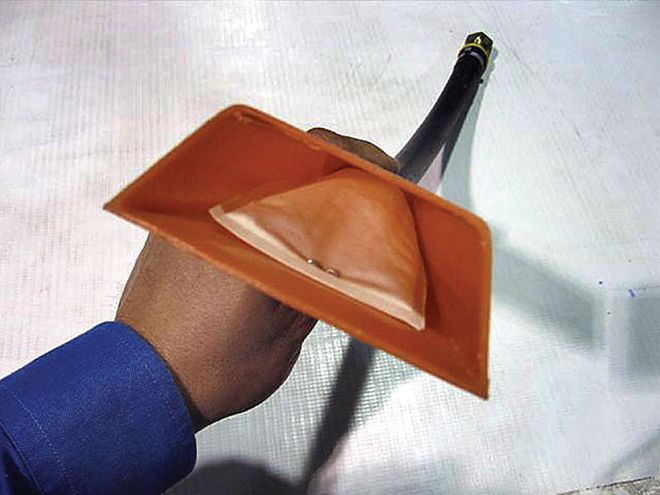 Check the end of the fuel pickup. If it uses a cloth filter, make sure it is clean and undamaged. Courtesy of ATL
Check the end of the fuel pickup. If it uses a cloth filter, make sure it is clean and undamaged. Courtesy of ATL
"Disassemble and clean out the fuel filter. Inspect it very closely for debris. If you find any, you need to find out what it is-especially if it is steel or aluminum-and determine where it came from so you can resolve any problem. Finally, I recommend taking advantage of the off-season and sending the barrel valve and nozzles back to the manufacturer. We can flow-test them, make any corrections if necessary, and send them back to you. That way you will know that they will be ready for the start of the season."
The last piece of the puzzle before packing the car away for the season is to clean the fuel cell. This is actually something you should do at the end of the racing season no matter if you are racing gasoline or alcohol.
The first thing to note is that all fuel cells are not created equal. If you run alcohol in a standard cell constructed for holding racing gasoline, mechanical troubles will be in your future. The methanol actually breaks down the foam used in a standard container. It is also damaging to the rubber bladder. Craig Mitchell of fuel cell manufacturer Aero Tech Laboratories (ATL) says that alcohol will cause standard foam to become gummy within a week or two. Shortly after that it will dry the foam, making it brittle. When this happens, parts of the foam will flake off and can become sucked into the fuel system. The result is a clogged fuel filter and potentially clogged jets in the carburetor. If you run alcohol, you should use a fuel cell constructed for alcohol. Those cells use special materials that are more resistant to alcohol racing fuel. It's always a good idea to drain all the alcohol left in the fuel cell after a night of racing instead of allowing it to sit in the fuel cell all week long.
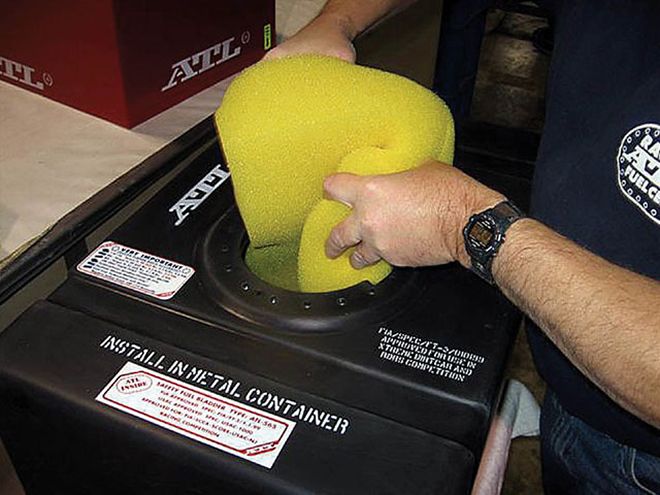 After allowing the foam to air dry, reinstall it inside the newly cleaned bladder. Courtesy of ATL
After allowing the foam to air dry, reinstall it inside the newly cleaned bladder. Courtesy of ATL
Besides draining the alcohol from the fuel cell during the week, after every race you should visually inspect the exterior of the fuel cell for dents, rips, or holes. Any of these, or a leak, will necessitate disassembly of the cell for further inspection. Otherwise, you are good to go.
If you have fuel cell damage, it is a good idea to break your fuel cell down into individual components and inspect everything thoroughly. This should be done at the end of the season, too. "First, drain the fuel out," Mitchell says of ATL's recommended end-of-season procedures. "Then rinse the cell thoroughly with water. That will dissipate any fumes that can cause an explosion. Now the fuel cell should be safe, so you don't have to worry about a spark. Disassemble the components and pull the foam out. The foam will be soaking wet with water. Just allow it to air dry. You don't want to try to wring it out or apply heat. Pull the bladder from the container and wipe it out so it is nice and dry. Wash out the metal container with soap and water to get out any dirt or rust. Wipe it dry, too.
"After everything has dried out, go ahead and reassemble the fuel cell. Give your foam the pinch test. If you can pinch it with your fingers and some of it comes off into your hands, you need to have it replaced. If it springs back to shape, it's still OK. Give the bladder a visual inspection. If it's a rubber bladder, look for any dry cracks, like in a tire. Also check to see if there are any scrape marks from installing and removing the bladder into the metal container. If the bladder is fabric, see if there are any loose fibers or threads hanging out. If you have any dents in the metal container, go ahead and flatten them back out now. You don't want to have anything that can rub the bladder and wear it down.
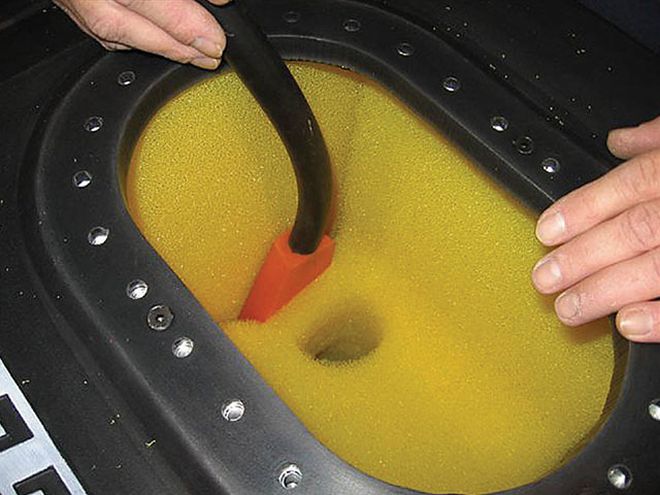 Slide the fuel pickup back into place in the very bottom of the cell in the right-rear corner. Courtesy of ATL
Slide the fuel pickup back into place in the very bottom of the cell in the right-rear corner. Courtesy of ATL
"If you have any doubt about anything, send the cell back to the manufacturer to have it further inspected. If not, you are ready to begin reassembly. We recommend installing the bladder and foam into the container and then positioning the pickup tube where you want it. Obviously, in circle track racing that's going to be the right-rear corner. Before attaching the line to the fill plate and bolting the fill plate to the container, take a moment to check the sealing washers. Sealing washers are the nylon washers that seal the bolts that hold down the fill plate. Make sure they aren't cracked or squashed out of shape. Also, we recommend you change the cork gasket that seals the fill plate against the container every off-season. You don't find out the fuel cell leaks at the gasket until you are upside down, and that's not what you want."
After your fuel cell has passed all the checks, continue bolting up the fill plate. Cap off all the lines so that everything is sealed and place the fuel cell in a protected, dry area of your shop where it will be out of the way until you are ready to reinstall it at the beginning of the next season.